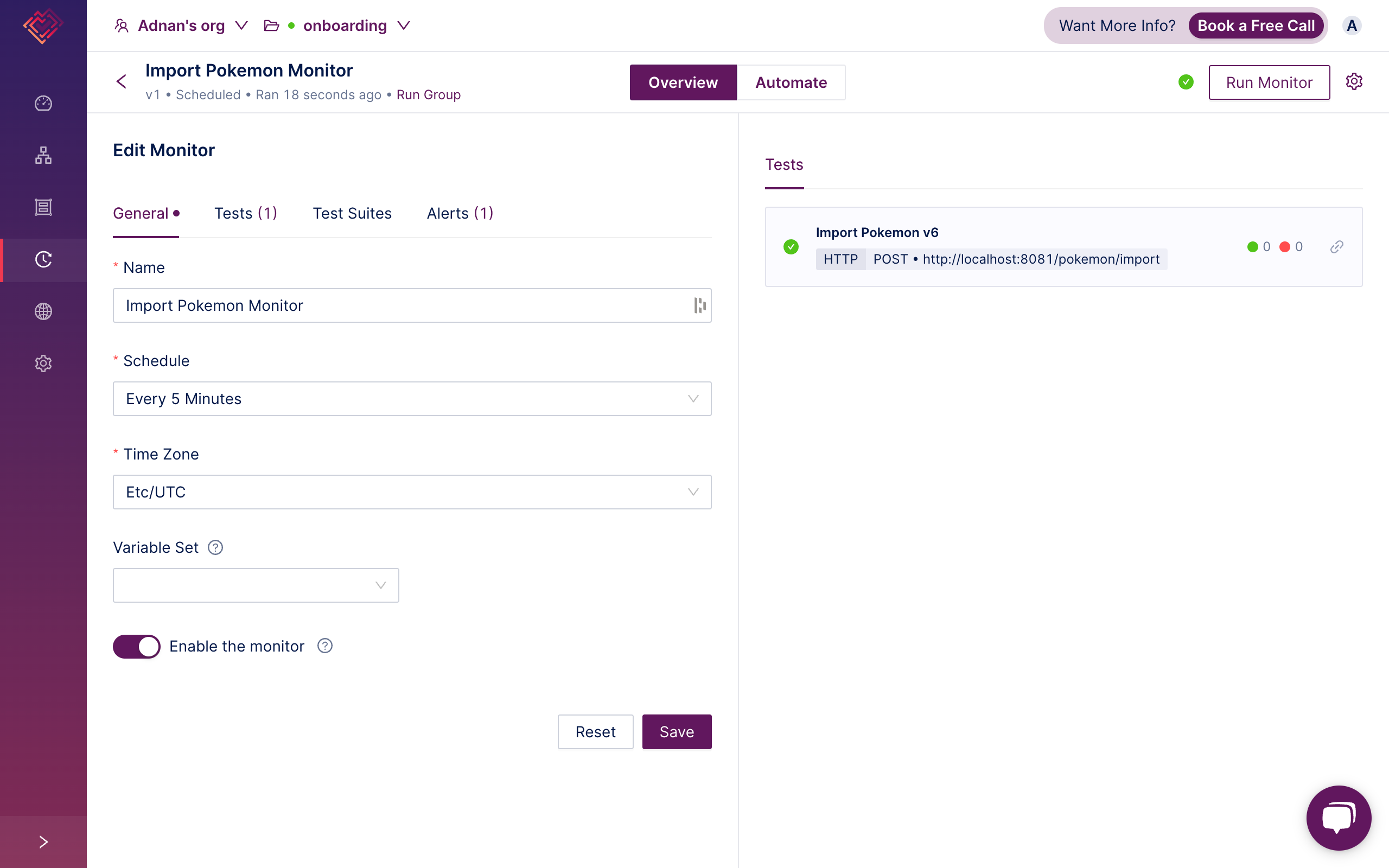Automate Test Runs
You know how to:
- Create and run a test.
- Generate a trace for every test.
- Create assertions.
The only thing left is to automate test runs. You can do this:
Automate Test Runs with Synthetic Monitors
This guide explains how to create a Synthetic Monitor that triggers a test every 5 minutes.
A Synthetic Monitor consists of:
- Name
- Enabled flag (
true/false) - List of tests
- Schedule (cronjob syntax)
- List of alerts
List of Tests
You can define any number of tests to run on a schedule as part of a Synthetic Monitor.
Schedule
Use a CronJob syntax or the Web UI dropdown to configure the schedule when the Synthetic Monitor will run.
List of Alerts
You can define any number of webhooks to send alerts to. This enables integrating with your favorite alerting tools.
Create Synthetic Monitors in Two Ways
- Programmatically, in YAML
- Visually, in the Web UI
Create Synthetic Monitors Programatically in YAML
Using the test you added assertions to in the previous section, you can reference it in the resource definition for a Synthetic Monitor.
type: Monitor
spec:
name: Import Pokemon Monitor
enabled: true
tests:
- ./import-pokemon.yaml
schedule:
cron: "*/5 * * * *"
alerts:
- id: slack-webhook-message
type: webhook
webhook:
body: "{\n \"text\": \"Monitor ${.Monitor.Name} has failed, follow the link to find the <${.URL}|results>\"\n}"
method: POST
url: <your-webhook-url>
headers:
- key: Content-Type
value: application/json
events:
- FAILED
The Synthetic Monitor You Defined
- Runs the
import-pokemon.yamltest. - Has a schedule of every 5 minutes.
- Sends a webhook alert to Slack when the test fails.
Create Synthetic Monitors Visually with the Web UI
Add Synthetic Monitors quickly by using the Web UI.

Why Tracetest Synthetic Monitors are Powerful
- You wrote ZERO lines of programming code. It's all defined in YAML.
- You can save them as part of your GitHub repo because it's defined in YAML.
- You do NOT need to use external CI tools to automate running tests.